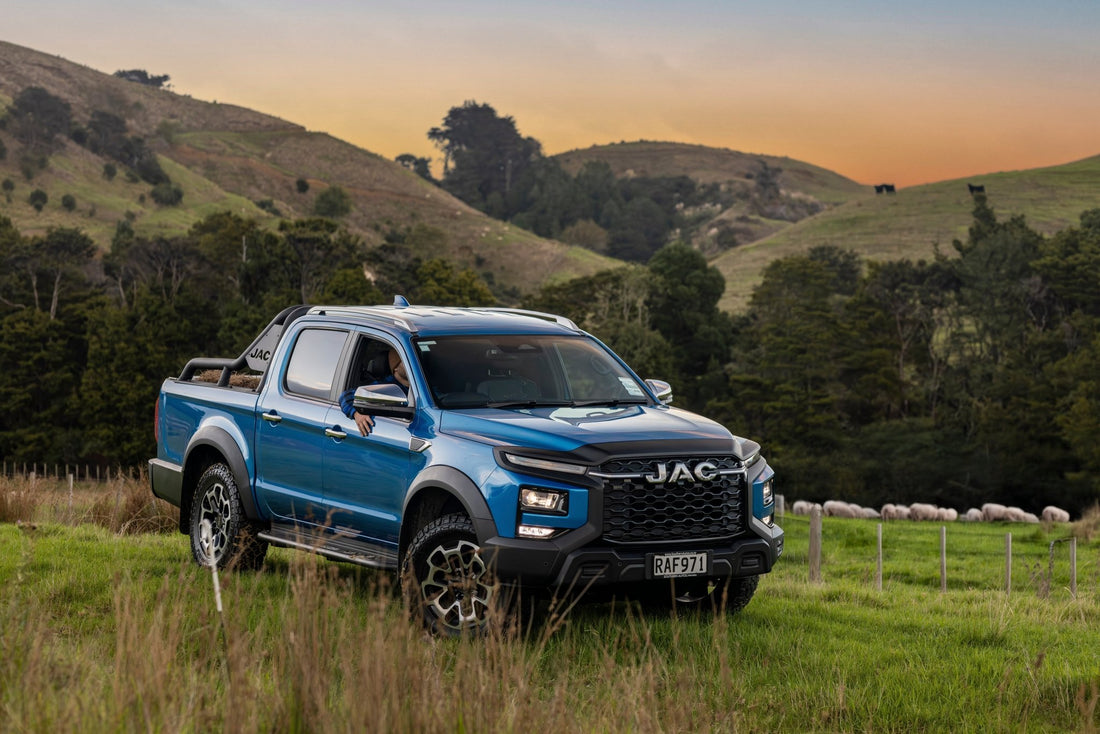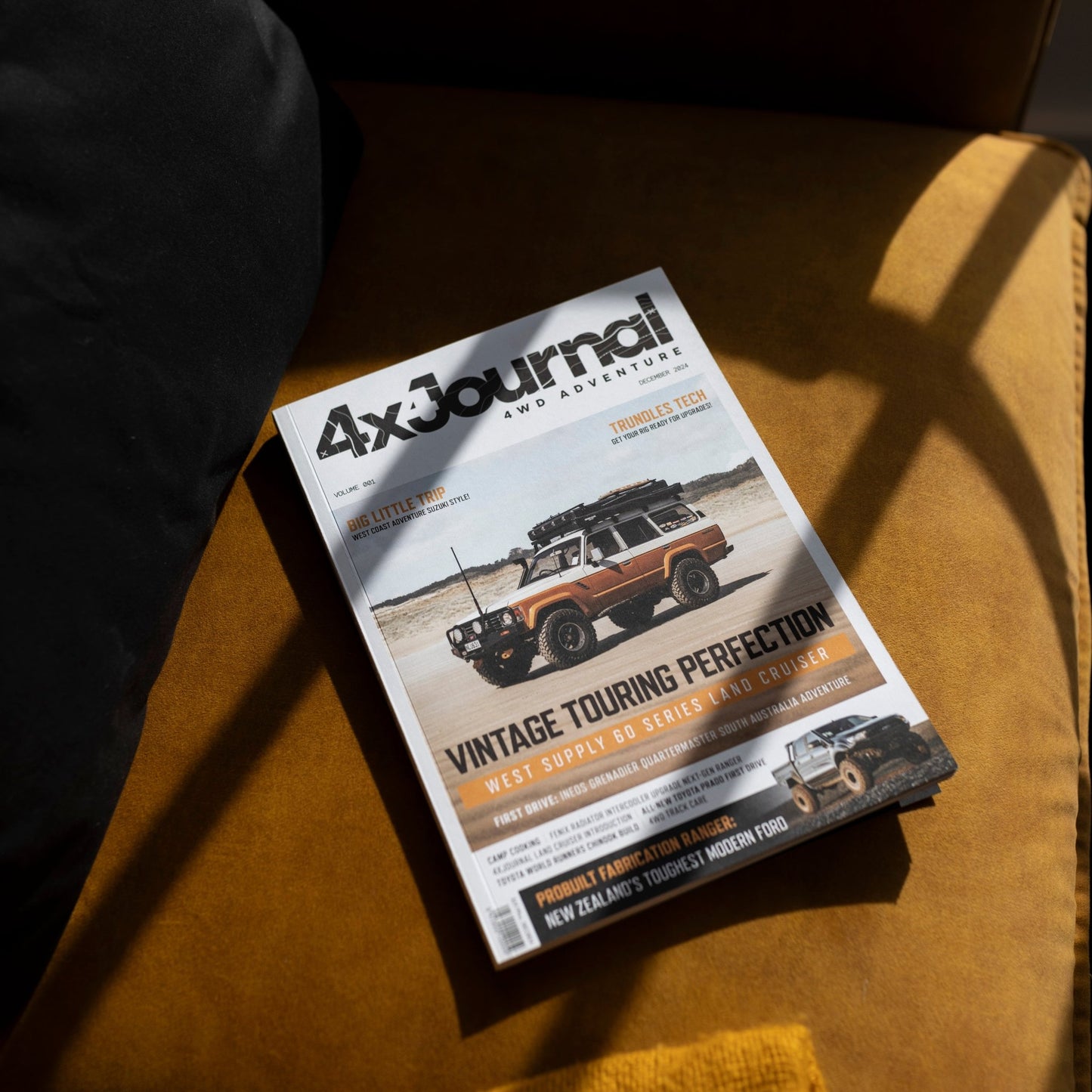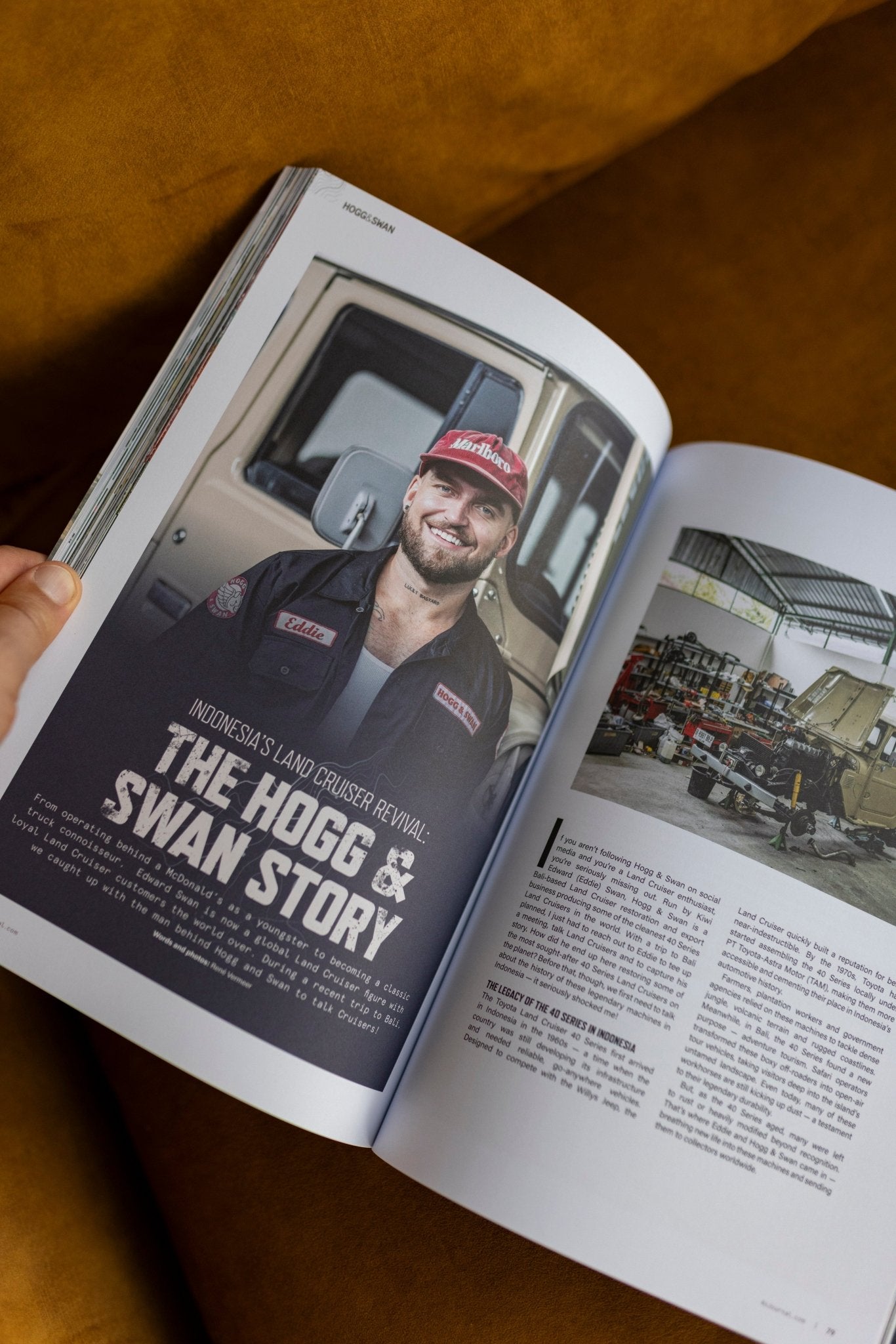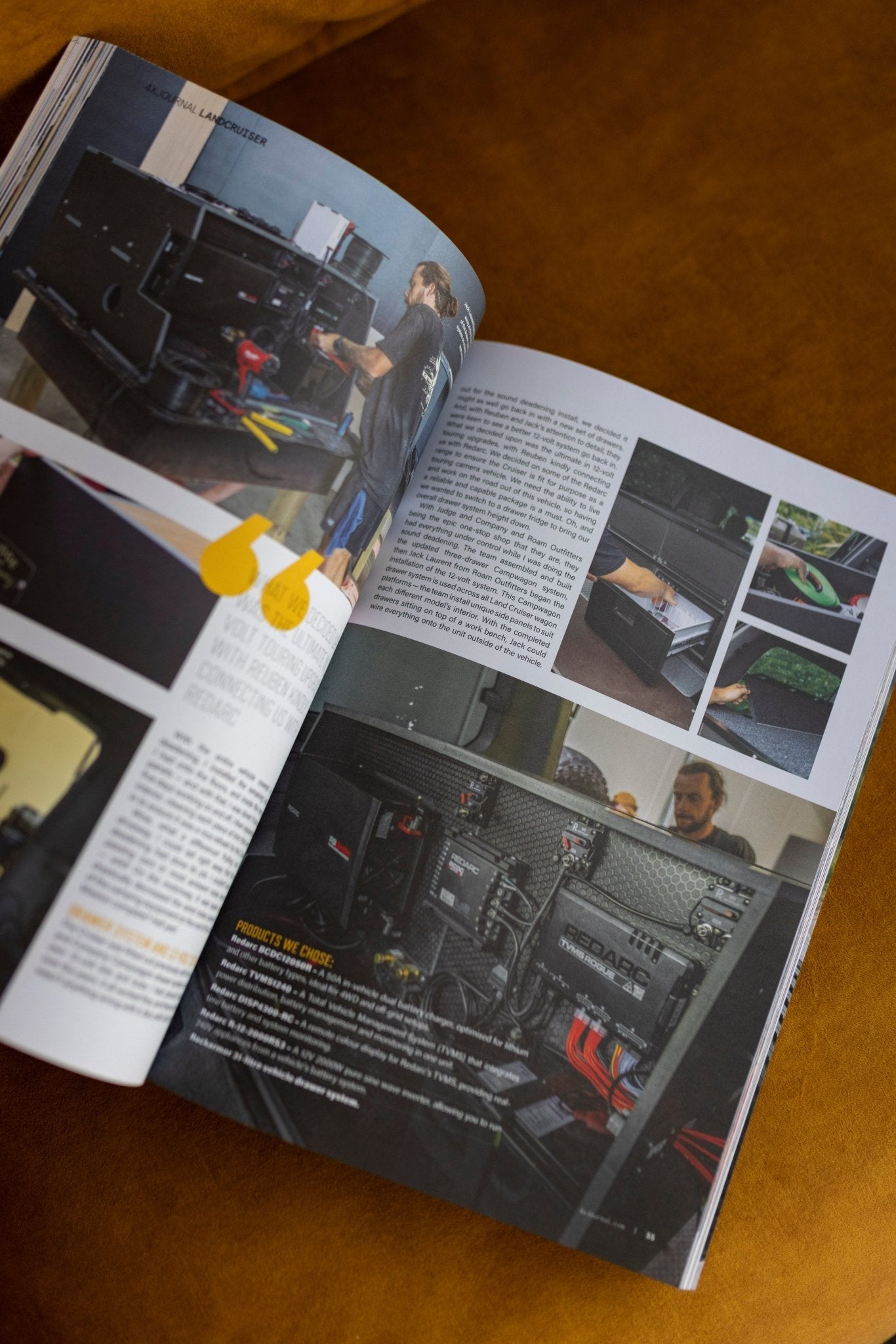
JAC T9 — Finally, a Decent Chinese Ute?
Share
When I get a new vehicle to review or test drive, I often like to do no prior research or homework that might sway my way of thinking. I like to take each vehicle at face value, whether it’s from Japan, Germany, or from China, like the JAC T9 here is.
Founded in 1964 as Hefei Jianghuai Automobile Factory, JAC Motors — officially Anhui Jianghuai Automobile Group Co., Ltd. — began as a producer of commercial trucks in China's Anhui province. Over the decades, it evolved into a diversified automaker, expanding into passenger vehicles in the early 2000s and launching its first MPV in 2002. JAC has since become a global player, exporting to over 100 countries and forming strategic partnerships, including a notable joint venture with Volkswagen to develop electric vehicles under the Sehol brand. With a strong emphasis on innovation, JAC operates R&D centres in China and internationally, positioning itself at the forefront of the electric and intelligent vehicle sectors. Today, JAC continues to grow its global footprint, offering a range of vehicles from rugged pickups like the T8 and T9 we have here, to cutting-edge EVs, appealing to both commercial and adventure-focused markets.

When JAC reached out to us here at 4XJournal, they were keen for us to get our hands on their latest product: the JAC T9 ute. JAC were fully aware we’re a four-wheel drive off-road magazine outlet, and their confidence in handing us the keys gave us a sense of confidence. We were thrown buzzwords like BorgWarner, Bosch, Eaton, and Honeywell. For those wanting some context, JAC raided the BorgWarner parts bin for a solid transfer case, Bosch for its electronics, Eaton for its rear electronically-locking differential, and Honeywell (best known for Garrett turbochargers) for forced induction. We’ve seen other auto manufacturers do this in the past — Toyota have done it with several of their models, with the GR Supra utilising a BMW engine and ZF gearbox, and their GT86 equipped with a boxer Subaru engine. It’s common practice, and with JAC appointing industry-leading businesses a parts list, you’re sure to get a solid combo.

The engine is JAC’s own, which is a small 2000cc diesel engine that outputs 125kW and 410Nm of torque — much lower than the 450Nm-plus utes kicking around these days. The 2000cc diesel is backed by an eight-speed ZF transmission — another major tick. In the standard drive mode, the JAC T9 sits in 2-High (rear-wheel drive), with selectable 4-High and 4-Low through a dial on the centre console. The rear diff lock is a simple button to the right of the transmission shifter.
Externally, I really don’t think the JAC T9 is a bad-looking ute by any means. It has an aggressive front end with a large grille, sleek headlights, and stacked spotlights and driving lights. The flares are generous too, meaning that if you choose to after purchase, wider and larger tyres would slot in nicely. I am not a huge ‘sports bar’ fan as seen on the rear of this model, so I would be removing those. That being said, these do run down the side of the tray, meaning you could actually use these to tie things down — unlike other makes and models where they end a foot from the rear of the cab.

The JAC T9 has a coil-sprung front-end, with the New Zealand market getting leaf-springs in the rear to enhance its payload. It can carry 1045kg on the tray and will tow three tonnes. Other markets around the world received coil-sprung rear suspension, which would be comfier and provide more flex off-road, but would decrease the T9’s ability to carry a load here in New Zealand.

The interior is a combination of leather seating, soft and hard plastics, and a large infotainment screen in the centre of the vehicle. The seats are comfortable and the material on the steering wheel appears durable. Unfortunately, the steering wheel lacks telescopic adjustment, so I struggled to get the ideal driving position.
To obtain the five-star ANCAP safety rating, the JAC T9 comes with a full suite of driving monitors and emergency features that need to be turned off every time you drive. The Emergency Lane Keep is very intrusive on the highway — seriously unnerving to drive with active. Before you hit the road, ensure this is turned off, otherwise you won’t enjoy driving it. We get that these features ‘need’ to be in these vehicles these days, but it does seem that the Chinese vehicles often have the most intrusive driver monitoring systems and safety features that aren’t easily turned off. Definitely room for improvement there with the JAC T9. Once turned off though (every time you start the vehicle), it’s a way better experience!

What’s It Like On and Off the Road?
With a solid, respectable parts list, a slick ZF transmission, and nothing but the open road ahead of you, the JAC T9 performs better than other Chinese utes I have driven recently. For a coil- and leaf-sprung vehicle, the ride comfort is actually very impressive — it feels more refined than anything else in its price category. The JAC T9 we tested had Kenda R/T tyres (at our request) at 38psi, which made the ride a bit harsh over some bumps, but that wasn’t the vehicle's fault. (A/T, R/T, and M/T tyres have a stiff sidewall, therefore don’t need to be at higher pressures like a highway tyre.) Turn-in is sharp for a ute, and the JAC T9 feels light on its feet thanks to its default two-wheel drive mode.
Power delivery is a different topic. Unfortunately, the T9 doesn’t feel as eager as, say, a Hilux, but it’s not terrible by any means. There’s a bit of throttle lag when you stand on it, but that seems fairly consistent with the cheaper ute segment. Even in Sports mode, there’s a delay on initial pick-up. As we mentioned in another story, this can be easily solved with a $300 Ultimate9 (or similar) throttle controller.
The eight-speed ZF transmission is, well, faultless really. There’s a reason ZF transmissions are in everything these days — they’re damn good.

Fuel economy was actually very decent, coming in at just over 9L/100km in mixed driving conditions (and yep, we’ve usually got our boot hard into it during testing!).
Android Auto isn’t wireless, so that’s a bit of a bummer, and the stereo lacks bass and mid-tones, but it is a trade vehicle after all.
Once plugged in, Android Auto fires up instantly and works well. The heated seats turn off after around 20 minutes, which was another interesting find.
And no, we didn’t get to try out the pie warmer!

Off-Road Performance
Ah, finally — mud, dirt, and gravel. Just how we like it.
Before the review, we requested JAC throw the highway tyres in the bin, as most of you reading this will likely do the same. In their place, a set of Kenda Klever R/T tyres were fitted, maintaining the factory sizing (265/60R18). Although noisy on-road, we were excited to see how the T9 would perform with a decent off-road focussed tyre.

We took the JAC T9 up to our testing ground north of Auckland — a good combination of gravel roads, slippery paddocks, and boggy mud if you’re keen.
As we made our way down the gravel road entrance, we switched the T9 into four-high.
To get the T9 into four-wheel drive, all you need to do is glance down to your left, before turning the electronic transfer case control dial. 2H, 4H, and 4L are illuminated here, and the dial is easy to use, although it does feel a bit flimsy.
When you switch it into 4H, the ESC OFF warning will come up on the dashboard and indicate you’re now in four-wheel drive.
With the JAC T9 in four-high, stability improved noticeably with the front tyres now having drive. On loose gravel, the T9 feels solid, stable, and not easily slid.
As we didn’t bring our compressor, we just left the tyres at 38psi of pressure, so upon our arrival at our testing area, we simply made our way straight out onto the farm paddocks.
The conditions were boggy and the grass was still wet from a recent downpour. Thankfully, we have plenty of drop-offs here that can truly test the flex of the front and rear axles.

In flexi terrain, the rear axle had a decent amount of movement considering the rear leaf springs. The front-end maintained traction and drive when pushed, and in low-range, the throttle wasn’t twitchy or jerky like other utes we’ve driven recently.
Although there isn’t a second gear start feature like Toyota four-wheel drives (for example), there’s a 'Snow' drive mode, which dulls the throttle and starts you off in second gear.
We suspect this will be one of the go-to drive modes in off-road, slippery scenarios. It did the job here, slowly and delicately giving us forward traction up and over a wet, slippery crest.
As with most factory utes, ground clearance is somewhat limited at the factory height.
The side steps would be the first casualty here, followed by the front underbody covers (which are plastic), but it’s all easily solved with a basic lift kit and taller tyres. Thankfully, all factory utes basically fall into this issue — it’s not JAC T9-specific.

The T9 has 210mm ground clearance, an approach angle of 27 degrees, and a departure angle of 23 degrees.
For context, the latest SR5 Hilux sits at 216mm of ground clearance, with the Ranger Wildtrak topping the charts at 234mm.

The JAC T9 should comfortably handle most typical off-road trails and moderate tracks — think forestry roads, muddy farm paddocks, and moderate ruts — but it might scrape the rear bumper a little sooner on very steep drop-offs compared to, say, a Hilux or Navara.Ground clearance alone won’t be an issue unless you're hitting serious rocks or deep ruts.It’s actually closer to a Triton or a GWM Cannon than a Ranger or Hilux in terms of off-road clearance figures, but not dramatically behind.
Its wading depth is rated at 650mm — another solid figure for those who like to tackle river crossings or deep muddy sections.

Final Thoughts
If you’re thinking about purchasing an affordable new ute that is capable of getting you to the construction site, the farm, or for touring New Zealand, the JAC T9 could be a viable option.
Its downfalls are easily solved — like the lack of power (there are tuning boxes and dyno tuners around New Zealand capable of increasing output once you’re out of warranty), and the low ground clearance can be solved with a basic lift kit and taller tyres.
It’s an affordable base platform that has reputable brands in its DNA. Although there’s no long-term durability testing for the T9 specifically, having the pillars of support from BorgWarner, Honeywell, Bosch, and Eaton means that the T9 is likely to hold up well to modifications and off-road terrain down the track.
For the money, we’re big fans.









